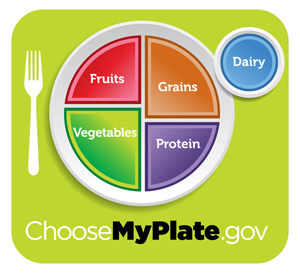You can’t turn on the news or open your favorite news website without hearing about the alarming obesity rate in America’s children and adults. Many theories exist about why America keeps getting heavier, some blame fast food chains like McDonald’s and Burger King, others point the finger at TV viewing habits and advertising, and still others look to lay the blame on school lunches or bad parenting. A recent study from the University of North Carolina at Chapel Hill may provide the definitive answer to that question and help turn the tide in the battle over the bulge.
There is no denying that the rapidly increasing obesity rates are alarming. The Annual Obesity Report was recently released and rates each state in terms of the percentage of their population that is obese, was not good news. While each state’s incremental changes over previous years tell a part of the story, the real headline is the increase over the last 15 years. In 1995, not one state had an obesity rate over 20%. This year, only one state is lower than 20%. The numbers that reflect the lowest obesity rates this year are similar to the numbers that represented the highest rates in 1995. The question of why people across the country are getting bigger at such an alarming rate is one being asked from the school cafeteria to the halls of Congress.
It is also the question the researchers at the University of North Carolina sought to answer in the study mentioned above. Using population and dietary data from 1977 to 2006, the team looked at how the eating habits of Americans have changed in an effort to determine what is causing the increased obesity rates. They started with three commonly held theories believed to be contributing factors; increases in portion size, increases in eating occasions, and increases in energy density of the food we eat. Their objective was to look at our history in an effort to understand what caused the obesity rates to increase so rapidly and then use that understanding to make recommendations that would help address the problem.
The most startling finding in the study was that increase in the average amount of calories one American eats each day. In 1977, Americans ate an average of 1807 calories per day. In 2006, that number had risen to 2374, a 31% increase. The fact that we are averaging 570 more calories per day is startling enough, but when you consider that it only takes an extra 3500 calories to add one pound of fat to a body, that means the average American today is eating the equivalent of one pound a week more than in 1977. Half of that increase, 229 calories per day, came in the last ten years of the study data spanning from 1996 to 2006.
Researchers also found that while portion size and the number of eating occasions seem to be definitive contributory factors, energy density or the number of calories in the food we eat, does not seem to have played as much of a role. From the beginning of the study period in 1977 to the mid-1990’s, increases to portion size were the main factor in the increased daily calorie average, adding 15 calories to the daily average each year. Beginning in the mid-1990’s, the number of eating occasions took over as the lead factor contributing an annual increase of 39 calories to the daily average. This finding correlates to the statistics showing the rapid rise in obesity rates from 1996 until now and the more rapid increase in daily average calorie intake over the last decade of the study.
What does this all mean? In order to stem the tide of obesity, we need to eat less and eat less often. It isn’t just the supersized meals at McDonald’s or the calories contained in a happy meal that matter. To reverse the trend, Americans can decrease portion sizes, cut down on snacks, cut high-calorie drinks, and make things other than food the center of our social activities.
Looking for healthier options? Visit Fill Your Plate for healthy eating recipes and nutrition featuring Arizona grown fresh fruits and vegetables.
Related articles
- It is not the corn it’s the carelessness (fillyourplate.org)
- The Buzz about Bees (fillyourplate.org)
- My Top 10 List of Summer Veggies (fillyourplate.org)


